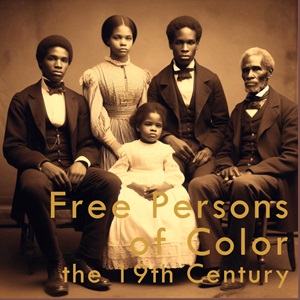

 |
 |
|
Study Areas Free Persons of Color |
Harrisburg CemeteryBlack History Perspectives Tour Rows of
old graves removed from the Lutheran and Reformed burial grounds at Fourth
and Chestnut Streets stand next to an adjoining plot for the
Presbyterian graves from the same place. No accommodations were made
for the Blacks buried at the Fourth and Chestnut burial grounds, however,
and the fate of their graves remains unclear today. |
Tour stop 7: "For the Burial of such White People", A Restricted CemeteryFrom the first day of its dedication, Harrisburg Cemetery restricted burials to white persons only. We don't know if that restriction was written into the cemetery by-laws at the time, but it was certainly the custom in Harrisburg. Several distinct and separate burial grounds existed within the boundaries of the town in 1845 when the Harrisburg Cemetery opened its gates. Three of the oldest existing plots were located in a single area bounded by Fourth Street, Chestnut Street and Meadow Lane. That area was divided between the Lutheran and Reformed burial ground, the Presbyterian burial ground, and an area known as the "colored people's burial ground." Prior to the establishment of those places of burial, Blacks in Harrisburg were interred in a plot "at the foot of Mulberry Street" called the African burial ground. That plot was subsequently purchased by the Church of God, and First Bethel Church was built on the spot in 1827 after the remains were exhumed and believed to have been removed to the site at Chestnut Street and Meadow Lane. Apparently not all of the remains were removed, however, as "a large quantity of human bones" were discovered while excavations were being made for a new school house next to the church building in 1858. In 1856 arrangements were made to remove the remains from
the Lutheran/Reformed plots and the Presbyterian plots and re-inter them
at the new Harrisburg Cemetery, then called Mount Kalmia Cemetery.
The land was then to » The inscription on this marker says: "PRESBYTERIAN BURYING GROUND In 1791 a tract of land east of the Zion Lutheran church was set aside for a 'Burying Ground' for the 'English' or Presbyterians of Harrisburg. "This tract soon became too small and in 1857 a tract adjoining the new Harrisburg Cemetery was purchased and about 175 burials were removed to this new Presbyterian Cemetery, now a part of the Harrisburg Cemetery." Not established, however, is the what was done with the remains of those buried in the "Colored People's Burial Ground" at Chestnut Street and Meadow Lane. They were not re-interred in plots adjoining the Harrisburg Cemetery, as were the Lutherans and Presbyterians, and the plot that was their burial ground was sold at public sale, along with the Lutheran/Reformed plots, in 1857. The remains were reportedly removed to the burial site that eventually became known as the Harris Free Cemetery, an African American burial ground believed to be located on or near Seventeenth Street in Harrisburg, at the Bypass. The exact site of this burial ground has not been established, however. This would have been the third interment for some of the remains, since those previously buried at the Mulberry Street burial grounds are believed to have been moved to the Chestnut Street burial grounds in 1827.
This restriction to whites only was, from the start, codified in the by-laws of the Harrisburg Cemetery and was included in the deeds for cemetery plots. A Harrisburg Cemetery deed, dated December 29, 1922 includes the phrase "To have and to hold the said burial lot unto the said [name of deed holder] his heirs and assigns, to the only proper use, benefit and behoof of the said [name of deed holder] his heirs and assigns forever, for the purpose of sepulture alone, and for the burial of such white people as he or they may choose to admit." [italics added] This wording is found in the bylaws published by the cemetery association in the 1870's.
Because tombstones don't generally specify the race of the person buried beneath, it is not certain how many African Americans are currently buried in the Harrisburg Cemetery. Centuries of custom have driven Harrisburg's African American population to bury their dead in established Black cemeteries, such as Lincoln, Midland, and William Howard Day. The most notable exceptions are Andrew M. Bradley, buried here in 1983, and his wife Gussie, buried here in 2001. The Bradleys are possibly not the first African Americans to be buried in the Harrisburg Cemetery, although they are the only African Americans that we have positively identified. We hope, with further research, to be able to determine when the restrictions against burying Blacks in this cemetery were dropped. Today, Harrisburg Cemetery is open for burials to everyone. Next:Return to beginning SourcesInformation regarding the closing of the old Harrisburg borough church graveyards is in Walking Tour of Harrisburg Cemetery, 150th Anniversary Edition (1995, Harrisburg, PA); and in "Harrisburg Cemetery," in American Cemetery (February 1986), pages 14-20) An article about the discovery of remains at the site of the old Mulberry Street African American burial grounds is in Annals of Harrisburg, by George H. Morgan (Harrisburg, 1858; repr. Heritage Books, Bowie, Maryland, 1994). A discussion on this website about the various African American burial sites in the Harrisburg area is on our letters page. A map of the old "colored peoples burying grounds," and information regarding the sale of those grounds, is in the collection of the Pennsylvania State Archives, MG-292 "Salem United Church of Christ Deposit of German Reformed Salem Church of Harrisburg Records, 1787-1916. Newspaper articles concerning the sale of the old burial grounds at Fourth and Chestnut Streets, and the re-interment process, can be found in the Harrisburg Daily Telegraph, from March through October, 1857; Repository, Pennsylvania State Archives, Microfilm roll #3035. |
|
Afrolumens Project Home | Enslavement | Underground Railroad | 19th Century | 20th Century
Original material on this page copyright 2024 Afrolumens Project.
Photographs on this page by George F. Nagle. No reuse without permission.
The url of this page is https://www.afrolumens.com/rising_free/hbgcem08.html